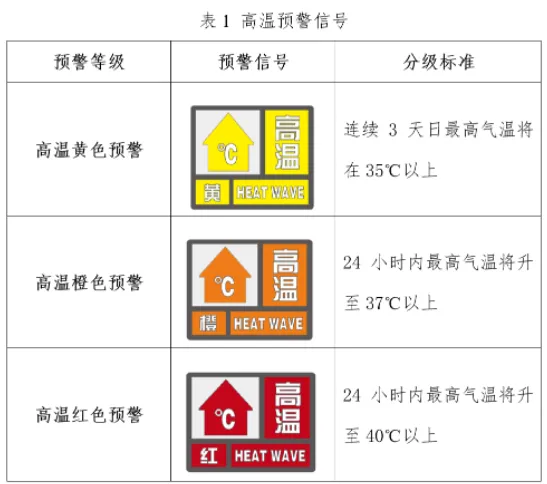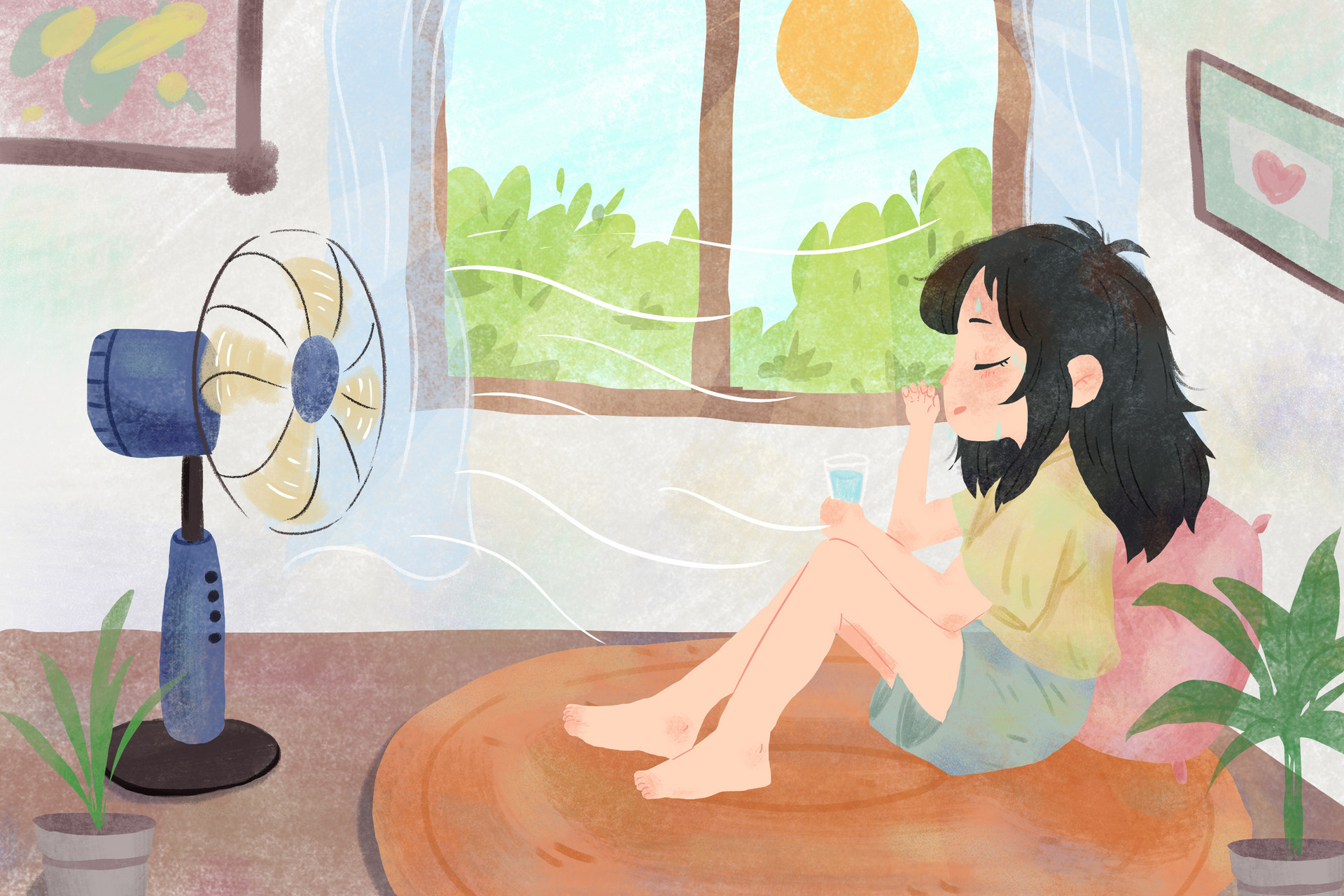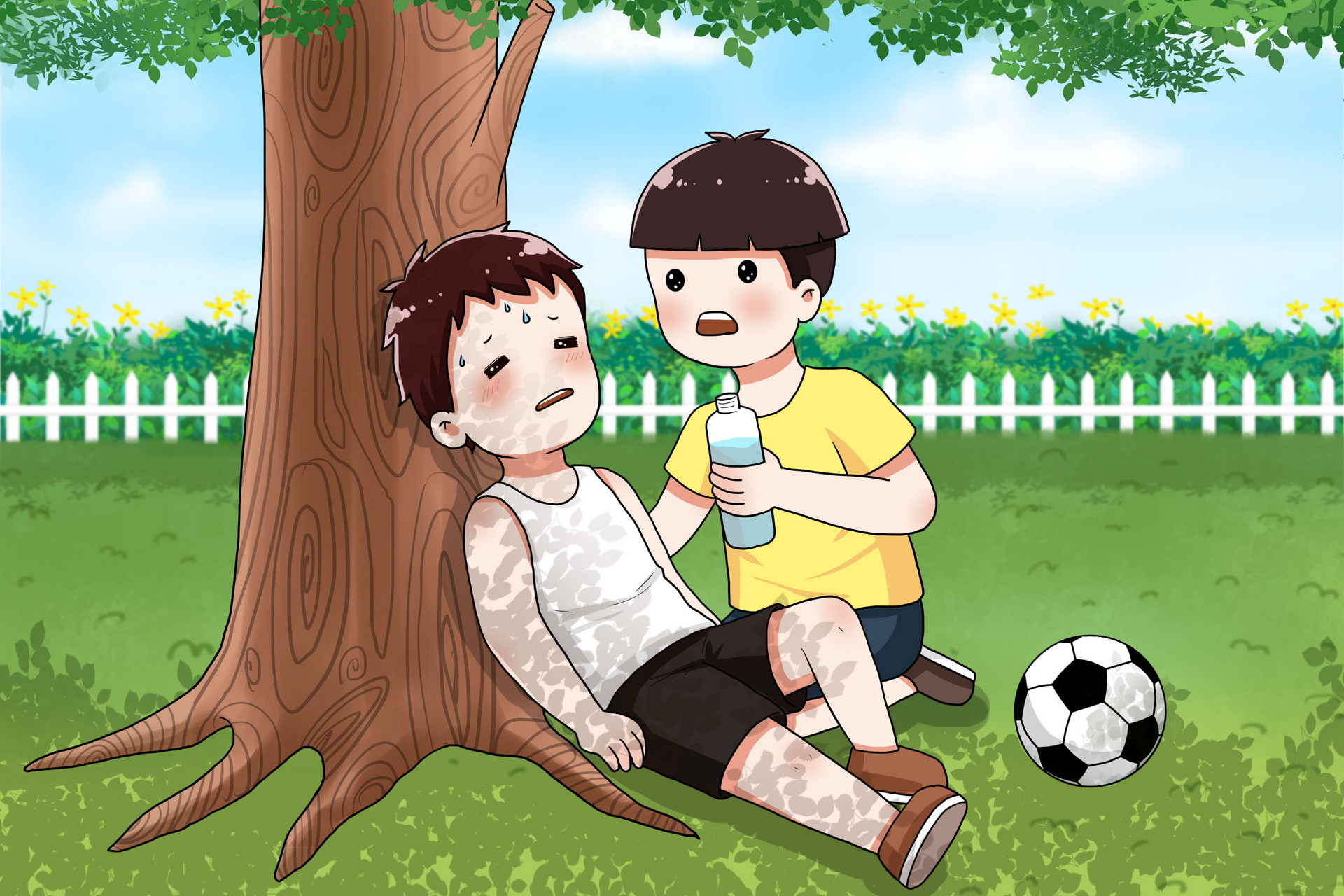At 15:51 on June 12, 2024, the Jiangsu Provincial Meteorological Observatory upgraded and issued an orange high temperature warning: it is expected that the highest temperature in most areas of the north between Jianghuai and Huaibei in our province can reach 35-36 ℃!
How to do well in health protection?
The "Guidelines for Public Health Protection against High Temperature Heatwaves" released by the National Bureau of Disease Control and Prevention point out that high temperature heatwaves can directly cause heat related diseases such as heat rash, hot swelling, heat syncope, heat cramps, heat exhaustion, and heat stroke. Heat cramps, heat exhaustion, and heat stroke are three different clinical manifestations of severe heatstroke. According to the "Guidelines for Public Health Protection against High Temperature Heatwaves", the key groups for health protection against high temperature heatwaves mainly include three categories: the first category is sensitive groups, such as children, pregnant women, and the elderly; The second group is patients with chronic basic diseases, such as circulatory diseases, respiratory diseases, mental and behavioral disorders, kidney diseases and diabetes; The third category is outdoor workers, such as farmers, construction workers, sanitation workers, couriers, and other personnel. Sensitive populations such as children, pregnant women, and the elderly, as well as patients with chronic underlying diseases, need to strengthen self-protection during high temperatures and heat waves. Attention should be paid to the health protection of outdoor workers during high temperature and heat waves.
Guidelines for Public Health Protection against High Temperature Heatwaves
This guide is applicable to public health protection during summer heatwaves, facilitating the public's learning of basic knowledge related to heatwaves and health, understanding the basic concepts of heatwave health protection, and adopting heatwave health protection measures.
1、 What is a high-temperature heat wave
1. High temperature heat wave
The "Classification of High Temperature Heatwaves" (GB/T 29457-2012) defines a high temperature heatwave as a weather process characterized by high temperature, high humidity, and prolonged duration, which makes the human body feel uncomfortable and may threaten public health and safety, increase energy consumption, and affect social production activities.
2. Health impacts of high temperature heat waves

High temperature heat waves can directly cause heat related diseases such as heat rash, hot swelling, heat syncope, heat cramps, heat exhaustion, and heat stroke. Heat cramps, heat exhaustion, and heat stroke are three different clinical manifestations of severe heatstroke, as follows:
(1) Heat cramps. Transient and intermittent muscle spasms accompanied by contraction pain occur after excessive sweating, which are more common in the muscles of the limbs, chewing muscles, and abdominal muscles, especially the gastrocnemius muscle, showing symmetry. The body temperature is generally normal.
(2) Heat exhaustion. A group of clinical syndromes characterized by insufficient blood volume, such as hyperhidrosis, damp and cold skin, pale complexion, nausea, dizziness, significantly increased heart rate, hypotension, oliguria, and may be accompanied by dizziness and fainting. The body temperature often rises but does not exceed 40 ℃, and some patients only experience an early increase in body temperature.
(3) Heat stroke. Clinical manifestations mainly include significant increase in body temperature and consciousness disorders, manifested as dry and hot skin, lack of sweating, delirium, coma, etc; May be accompanied by systemic epileptic seizures, rhabdomyolysis, multiple organ dysfunction syndrome, etc. Body temperature reaching 40 ℃ or above.
High temperature heat waves can exacerbate the occurrence and development of circulatory, respiratory, urinary, and neurological diseases, leading to the onset of cardiovascular and cerebrovascular diseases such as heart disease and stroke; Causing serious lung diseases; Causing acute decline in renal function, and in severe cases, leading to renal failure; It can also cause mental and behavioral disorders, leading to cognitive impairment, anxiety, depression, and other mental illnesses, which in turn can increase the number of accidents and casualties. Excessive exposure to high-intensity ultraviolet radiation during high temperature heat waves can also have adverse effects on the skin and eyes.
3. High temperature heatwave warning information
(1) High temperature warning signal. The "Guidelines for Meteorological Disaster Warning Signals and Defense" stipulate that high temperature warning signals are divided into three levels (see Table 1 for details).

(2) Hot health risk prediction, warning, and intervention information. Including health risk monitoring, health risk warning, and health risk warning information (see Table 2 for details).

2、 Suggestions for protective measures for the general population
1. Keep the indoor environment cool
(1) Maintain appropriate temperature and humidity. When the indoor humidity is not suitable, dehumidification or humidification equipment can be used to adjust the indoor humidity.

(2) Reduce direct sunlight exposure. Close the windows of Chaoyang or use sunshades, curtains, etc. to block direct sunlight.
(3) Reduce the use of indoor electrical equipment. Turn off unnecessary lights and heat generating electrical equipment; Prevent fires caused by overloading of power lines due to excessive electricity consumption.
2. Reduce outdoor exposure to high temperatures
(1) Reduce going out. Try to avoid outdoor physical activities and outdoor sports as much as possible; If you need to go out for activities, try to avoid going out during high temperature periods.
(2) Pay attention to sun protection. Wear lightweight, loose, light colored clothes and use sunscreen when going out.
(3) Move around in a cool place. Try to avoid high temperature environments and direct sunlight, and it is advisable to move in a cool place.
(4) Reduce physical exertion. If you need to go out in hot weather, you should reduce vigorous activities and pay attention to timely rest to avoid excessive physical exertion.
3. Pay attention to physical health
(1) Prepare heatstroke prevention and cooling medication. Take medication when feeling unwell (refer to the medication instructions); If you suffer from chronic underlying diseases or take multiple medications for a long time, you should consult a doctor.
(2) Pay attention to regulating diet. Drink water in a timely manner, prepare heatstroke prevention and cooling drinks, moderate cold drinks, and avoid drinking drinks containing alcohol, caffeine, and a large amount of sugar; Eat small meals frequently, with a light and easily digestible diet.
(3) Pay attention to changes in body temperature. Measure body temperature in a timely manner. In case of abnormal body temperature, use cooling products such as cold water, ice cubes, ice packs, and ice towels to physically cool the skin, clothes, or neck area. If conditions permit, take a shower or shower.
(4) Pay attention to discomfort symptoms. If there are symptoms of heatstroke such as dizziness, headache, fatigue, thirst, excessive sweating, palpitations, flushing, burning skin, and slightly above normal body temperature, seek help in a timely manner, move to a cool place to rest as soon as possible, measure body temperature, and replenish fluids; If muscle spasms occur, immediately rest in a cool place and supplement with drinks containing electrolytes appropriately; If discomfort symptoms persist, seek medical attention promptly.

(5) Seek medical attention immediately if symptoms are severe. If there is skin burning, confusion, excitement, unclear speech, irritability, delirium, convulsions, and/or coma, seek medical attention immediately or call an ambulance. At the same time, rest immediately in a cool place, place cooling supplies on the neck, armpits, and groin for cooling, measure body temperature, and maintain ventilation.
3、 Suggestions for protective measures for key populations
On the basis of taking protective measures for the general population, key groups also need to strengthen their own health protection according to the following measures.
1. Sensitive populations
(1) Try to avoid high temperatures as much as possible. Avoid strenuous activities; Encourage children who play outdoors to stay in shaded areas as much as possible, and pregnant women and elderly people to stay indoors in cool areas as much as possible.
(2) Ensure sufficient hydration and replenish electrolytes. Drink water actively, multiple times, and in moderation. Do not drink water only when you feel thirsty; Properly supplement drinks containing electrolytes and avoid drinking drinks with excessive sugar content; Pay attention to urine volume and color. If urine volume decreases and color darkens, it indicates insufficient water in the body.
(3) Maintain communication and contact. Maintain contact with family and neighbors, and seek timely help and care from others. Elderly people living alone should visit daily and leave their contact information with their neighbors or community.
2. Patients with chronic underlying diseases
(1) Timely replenish water. Drink water actively, multiple times, and in moderation. Do not drink water only when you feel thirsty; If water intake is restricted due to illness or diuretics need to be taken, promptly consult a doctor for a reasonable amount of water intake.
(2) Reduce physical activity. Not engaging in strenuous activities to give the body sufficient rest; If exercise is necessary, try to schedule it at a cooler time of the day as much as possible.
(3) Supplement electrolytes appropriately. Supplementing the body's lost electrolytes in moderation through meals and drinks; If you are on a low salt diet, you should consult a doctor.
(4) Stay in touch. Maintain contact with family and neighbors, and seek timely help and care from others.
3. Outdoor workers
(1) Supplement water and electrolytes. In moderate intensity homework activities, one should drink one glass of water (200mL~300mL) every 15 to 20 minutes; Drink water before feeling thirsty to keep your body hydrated. Timely intake of meals and drinks containing salt and minerals to replenish lost electrolytes in the body.
(2) Keep cool. It is advisable to wear reflective clothing and a cooling vest with ice packs; Replace clothes soaked in sweat in a timely manner.
(3) Reasonably arrange outdoor homework time. Arrange work with high temperature exposure to cooler times of the day as much as possible; Outdoor workers should take regular breaks and rest in shaded areas or places with cooling equipment; A shift system can be adopted during high temperature periods to increase the rest time and frequency of workers as much as possible.
(4) Prevent occupational heatstroke. Reduce labor intensity and slow down work speed. If there are signs of heatstroke, immediately move to a cool place to rest and drink moderate amounts of water to cool down; If the condition is severe, seek medical attention immediately or call an ambulance.
(5) Regular health check ups. Outdoor operators should regularly carry out routine occupational health examination and emergency occupational health examination before and during their work. It is strictly prohibited for those suffering from chronic kidney disease, uncontrolled hypertension, uncontrolled hyperthyroidism, uncontrolled diabetes, blood stasis area ≥ 20%, epilepsy and other personnel to engage in high-temperature work.
Text source: People's Daily Health, infringement contact deleted